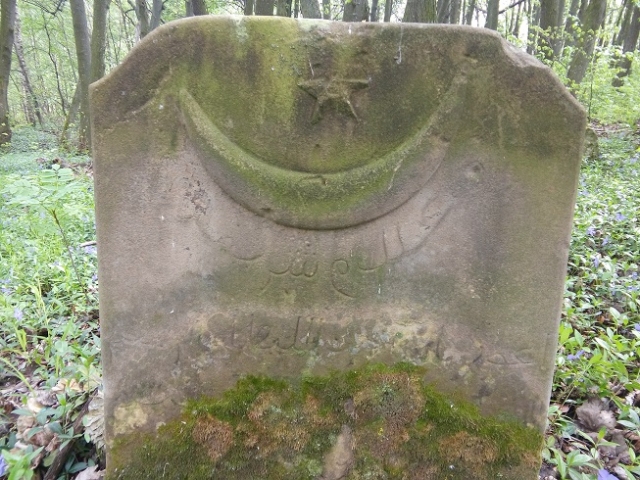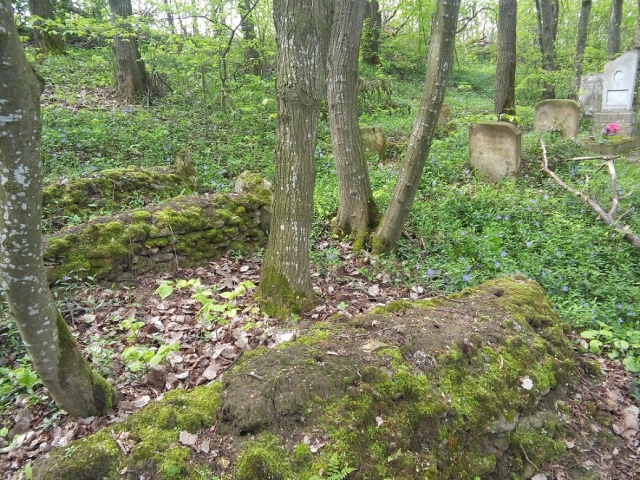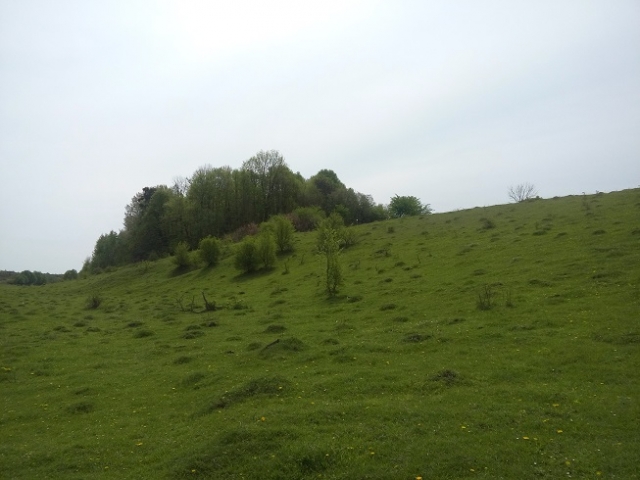Due to the latest researches, we know a lot about the cultural heritage of the so-called "Lithuanian Tatars" (Lipka Tatars). This ethnic group lived on the territory of modern Lithuania, Poland, Belarus and Ukraine in the XV century. There is a reason to believe that this ethnic group, traditionally professed Sunni Islam, formed mainly out of the Crimean Tatars and Nogais. In Western Ukraine, one of such "Islamic enclaves" was Yuvkivtsi village (now it is a Bilohiria Raion of Khmelnytskyi region), which historically belongs to the so-called “Great Volyn”.
Of course, today, it is difficult to imagine that nearly 500 years ago, Muslims were permanent residents of this region. It is quite hard to get the settlement, because of the dirt roads that are snow-covered in winter and are washed away with rains in summer. Furthermore, the local population is very few, no more than a hundred people. You can see a lot of abandoned houses on the way. Among the small population, there are still a lot of people, mostly the older generation, who have Muslim patronymic Mustafayevych, Suleymanovych, Yusufovych and others. In fact, the only thing that today recalls the Islamic past of Yuvkivtsi is relatively large (60-70 burial places) Tatar cemetery, located in the forested hill on the outskirts of the village. There was also a mosque (as locals say it was situated "between two hills"). The building was situated somewhere near the cemetery, but, the exact place, where it had been located at least until the First World War, could not be determined.
According to the Polish and Ukrainian sources, the first "settled" Tatars came to Yuvkivtsi (then — Ivkivtsiv) in the beginning of the XVI century. They were supposed to be Crimeans, captured by Prince Vasyl-Kostiantyn of Ostroh near Vyshnivets (1512), so they dwelt in Ostroh. Tatars belonged to the nobility and had many privileges, which were given by Polish kings. Later, in the days of Russian empire, they even had serves. According to the investigation of Polish historian Stanislav Dzyadulevych (1872 - 1943), the patrimonial names of Tatars from Yuvkivtsi had very different origins. The Qasymovyches were the descendants of Ostroh Tatar Qasym, The Zhdanovyches were the descendants of Nogai Zhdan that came from the steppe, the Shahmantsers (probably the name originally was "Shahmansur") moved from Lithuania. The origins of some family names still require the research, for example, the Lominskies (probably came from Lomak), the Muhlinskies possibly came from Muheddin or Muhlio. Some Yusuf Muhlio was the mosque Imam in 1915. The family of Soltyk was notably big and could come from Soltykan, the son of Kanchim who lived in the first half of the XVI century. Later, by the end of the XVII century, the family grew so much as the people began to distinguish between "white" and "black" Soltyk. Today the surname of Soltyks is the most common surname of Tatars from Yuvkivtsi. Somewhere in the 50s of the XIX century, it seemed like someone from that family scribed "the hamayil of Yuvkivtsi" that was a prayer book, contained verses of Koran, prayers in Arabic, and its translations into spoken Ukrainian and Tatar languages (written with Arabic letters). Nowadays, descendants of Yuvkivtsi Tatars keep this unique document as a family heirloom.
The Milkomanovych is notable by the fact that its members were the imams of the local mosques in the middle of the XVII century. In particular, Ramazan Milkomanovych was the "Mullah of Ostroh" in 1669. Later some part of the family settled in Yuvkivtsi. The Gasanovych (Hasanovych, Asanović), which appeared in the sources of the XVIII century is also remarkable. At various times these families owned the land in Yuvkivtsi. In times of Polish–Lithuanian Commonwealth, they represented some Tatar chorągiews (troops) during the service at princes of Ostroh and Radzivil.
It is interesting to follow the number of Yuvkivtsi Tatars that has been changing during the centuries. Luka Rafalskyy, the ethnographer, counted 90 Tatar men here in 1864-1865; in 1886 there lived 233 "Mohammedans", both men and women. In 1909, Zakaria Kazakevych, Tatar from Yuvkivtsi, wrote for Orenburg newspaper "Vakit" ("Time"), that about 300 Muslims lived in Yuvkivtsi, and, according to him, all of them had forgotten the Tatar language, and more often turned to Christianity because of lack of educated imams (Thank Tatar Refat Abduzhemilev for the translation of this letter – Mykhailo Yakubovych). The archival sources of 1911 recorded 340 Muslims in both Ostroh and Yuvkivtsi.
After the World War I and the Bolshevik Revolution, the Muslim religious activities in Yuvkivtsi almost have not been mentioned. We only know that in 1942, the local population of Yuvkivtsi were deported by Nazis, who formed the German colony "Sun Valley" there. It is hard to say, whether all local population, who came through the war, returned home, but, according to the memories of ostarbeiteren Isid Zhdanovych, Tatars were deported along with Ukrainians and Polishes.
The history has preserved the names of some Yuvkivtsi Tatars. Akmalovych Kimal Yosypovych (born in 1896) was an officer in the imperial army, and later lived in Poltava region. In1938, he was repressed by NKVD. In 1956 NKVD rehabilitated him. Kozakiewicz Mustafa Zakariyevych (Zaharovych.) was born here, in Yuvkivtsi (1901 - 1969). He is graduated student of the Czech Polytechnic Institute, ethnographer, one of the most famous scholars of traditional housing and economic building in Polissya region. It is Mustafa Kozakiewicz that was the first who began to use the term "Ukrainian Polissya" in Soviet times, separating it from "Belarusian Polissya". Many people, who came from Yuvkivtsi, are living far away from home now, so it is difficult to follow their further ways.
A separate historical object is already mentioned cemetery of Yuvkivtsi. The earliest graves belong to the late nineteenth century; there are also burial places from earlier period. Interestingly, these old burial places distinguished from the current funeral ceremonies of Turkic peoples. Moreover, they are closer to the rituals of early Islamic period in many ways (which are currently practiced, for example in Saudi Arabia). The tomb looks just like a stone embankment, which is placed between two small stones at the both sides. The stones slightly differ against the background of the chernozem soil. They were brought specially for ceremonial purposes. Such graves demonstrate compliance with the relevant requirements of Sharia to the height of the grave, which later began being interpreted in some freer way. Thus, the tombstones of the twentieth century are already higher and have specific inscriptions in Arabic and Russian. There is a star (placed horizontally that is typical for Lipka Tatars) above carved crescent. Some stones have carved flowers. Almost all graves have the same Arabic inscriptions "Kalyam Sharif" ("noble word", i.e. Qur'an), hereinafter "Auzu bi-Llyahi mina ash-Shaitani r-Rajimi" ("Looking for the protection of God from Stone Shaitan"), "Bismillyahi Rahmani Rahim" ("In the Name of Allah, Most Gracious, Most Merciful"), "La ilyaha Ilah Allahi, Muhammadan Rasulu Lla" ("There is no god but God, Muhammad is the Messenger of God "). The name of the deceased is indicated below. Dates of birth, death, and the inscription "Rest in peace" are going below the name. Almost the same tombstones are also situated in the Tatar cemeteries of Lithuania, Poland and Belarus. There are the graves of Tatars in the cemetery, who lived far from Yuvkivtsi (e.g. Tatars from Kovel). The inscription on one of the tombstone indicates "Mullah of Yuvkivtsi" is buried here, but his name is unreadable. The cemetery has been still functioning. The contemporaries are looking after it. It is the only such Muslim object in the region.
History of Yuvkivtsi needs to be scrutinized, especially the archival sources require deep search. But even those remained facts indicate that small in number, but very long Islamic presence in the region let us consider Islam as the traditional religion of Volyn along with Christianity and Judaism.





